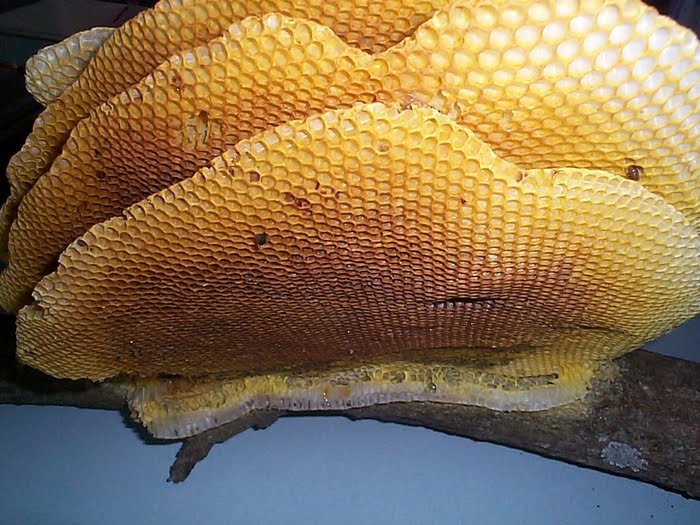Snailing night.
Looking in the mirror, I
see the ten year old girl that I was. Stringy blond strands fighting
straw like underbrush, brown, bronze and wet. A large childish smile
parked on dark laughing eyes, I am rain, I am happiness. Can't wait
to gross out my friends with my old recipes.
As I pull weeds in the
garden, beset with a week of strong storms, I find the American
Midwest akin to my temperate humid Southwestern France. I am that
child again, standing in the narrow plot behind the house in
Angoulême. Feet ensconced in rubber galoshes, I track mud in the
paths between vegetables and flowers. It is getting dark and the
chill of relentless rain penetrates perception to the bone.
I have set the upturned
clay pots amid the thick vegetation and will return after supper to
find what the traps have collected. I shake my red raincoat before
hanging it on its hall hook, untie my rain cap, slip the
overshoes off, and check for moisture on my felt house slippers
before stepping on the bees-waxed floor. The strict protocol routine brings
comfort in its predictability.
Dinner served, dishes
done, I swiftly grab the one rectangular flashlight from the kitchen
cupboard, there are some distant rumblings in the sky to the west. I
know the sound of nature, little frogs pip in the lilacs, birds stir
and shake feathers in the fat peach tree.Facing south the first cloche hides amid Swiss chards, I lift it
carefully as if snails could or would run away; the light reveals a
good dozen large snails, I pluck them from the safety of their
newfound shelter. Guilty, yet hungry for more, checking under dripping
plants, I skip from pot to pot, raise them from the rocks I have set
them on, drop snails into my wire basket, their new cage. Tremble and tumble, I moan and bite my lip at every find.
By the time I have walked
the entire distance to the last one on the metal shavings pathways,
the basket is heavy with the globes of brown striped common snails. A
local delicacy. I have done my pesticidal duty, these won't eat our
prized endives anymore. I swing the basket of live prey and apologize
to them for imprisoning them in this ancient wire structure. I close
the lid on them and on my conscience in one swift gesture, click! And
there I go trotting to the kitchen, proud of my bounty.
Ah, not too bad says
father lifting his demi-tasse cup of dark chicory that smells of Armagnac. Now the spiraling helixes will go on a fast till all
fecal detritus is expelled from their systems. Down the basement, I set
the tall tower on a newspaper in the ambient darkness for them to become lean and hungry. For us
to satisfy a gustatory taste for rare delicacies. I bow my head in
hesitant apology.
A week later I bring the
terrestrial shells up to the slaughterhouse that will be the kitchen
table. I check for dead ones by poking them tenderly with the point of my
knife. My Pradel knife finds only two lame victims of this practice
to return to the compost pile. The rest are washed in salt water,
left to salivate and froth for an hour. Then I must drop them in
boiling water, pull the basket up in two minutes and proceed to
extract them from the shells. Wash them carefully, as the cooked
creatures will be served in these.
Meanwhile I peel garlic,
two entire cloves, chop parsley, two whole handfuls, heat olive oil
in the sauce pan, throw the minced garlic in, stir till brown,
sprinkle a handful of flour over it and pour white wine in it till
the sauce thickens—not too thick- not too thin, not a single
lump...now add the parsley, just in time to present at table. Perch
platter on tile, add the snails and gently enrobe them with the
sauce, grind pepper and sea salt over it. Cover and wait.
The plate full of
scallions and fresh radishes, celery blades and carrot wedges with
three salt wells full of gray Atlantic sea salt is empty, the
hors-d'oeuvres plate removed, the shellfish forks installed, I
majestically lift the lid off the terrine and exclaim “bon
appètit!” I serve father first, line up the thin two pronged wood
handled fork perpendicular with the small knife. With great care, I
raise the sauce ladle full of the gourmet entree; I am not breathing,
nor looking at anything but the steam rising from the centerpiece.
The aroma intense in the small kitchen, the sun rays at right angles
through sheer curtains, mother sits motionless on her woven reed
chair. Hands on apron, I neither budge, nor blink. The suspense
unbearable. The tiny fork travels slowly to his lips, I see the dark
stubble of evening beard on his chin, I spy the teeth which will tell
of the effort I have made.
Now I serve mother, then
sit myself, no word, she takes a second bite, kicks my leg under the
table. She pushes a flour lump on the side of her plate, slides her
tongue on her teeth as if something distasteful had bothered her
sensibilities, I dare not take a taste as yet. Just as I inhale, “
ça va, pas mal! Un peu trop salé” ( Ok, not too bad; slightly too
salty) father tilts his head in cockeyed approval. I hold a runaway
smile under tight lip. Mother silently keeps hunting for lumps with
croutons impaled to fork. I plunge into the rare dish and savor each
rubbery morsel closing my eyes at every bite, separating the flavors
on my palate, grainy garlic, pungent parsley, gray spirals of smooth
protein, and the semi-sweetness of the slowly simmered wine lingers
on the memory.




